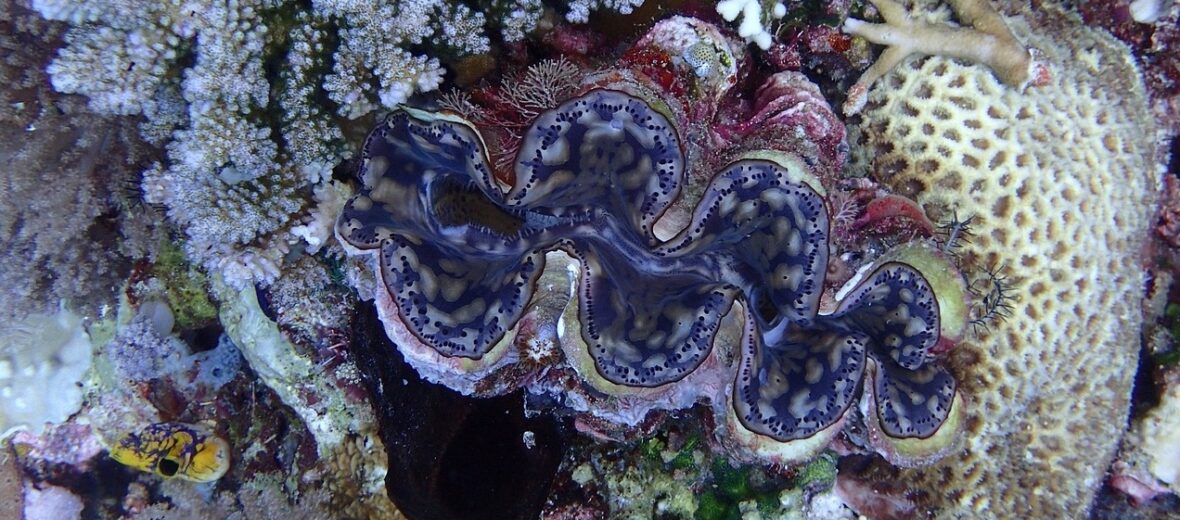
Found in the tropical waters of the Pacific & Indian oceans, in Australia, Japan, Micronesia, and Thailand, the giant clam is the largest known sessile (attached to the ground) mollusk in the world. These mollusks prefer lagoons and coral reefs with plenty of sunlight. Due to their size and beauty, these clams are widely over-collected for their meat and for reef aquariums, around the world. Due to this over-collection, water pollution, and habitat loss, they are listed as Vulnerable by the IUCN and their future is uncertain.
First the Stats…
Scientific name: Tridacna gigas
Weight: Up to 440 lbs.
Length: Up to 4 feet
Lifespan: Up to 100+ years
Now on to the Facts!
1.) They can be found at depths of up to 66 feet.
2.) While these clams are documented as the heaviest, the longest clam species award goes to Kuphus polythalamia… for now.
3.) Their primary means of food comes from the algae they host in their cells. In that act of photosymbiosis, energy is derived from the hosted algae via photosynthesis.
4.) Unlike other bivalves, the giant clam cannot fully close its shell.
5.) Giant clams have 2 siphons that jet out waste and take in food particles that happen by.
But wait, there’s more on the giant clam!
6.) These giants also provide homes and subsequent protection for pea crabs.
7.) Eels, fish, sea stars, and snails sometimes feed on pieces of the clam’s meat. Since the clam has no defense against these predators, they spend their final days being slowly consumed to death.
Did you know…?
Reports of divers being closed in giant clam shells is not true. There has never been a recorded death, at the hands of a clam.
8.) Being hermaphrodites, giant clams have both male and female reproductive organs. Therefore their primary means of reproduction is self induced. However, they do occasionally reproduce with other giant clams.
9.) They reproduce by releasing huge amounts of sperm and up to 500 million eggs into the water. This is known as external fertilization. These components mix with the products of other neighboring clams.
10.) The larvae begin life as free-floating forms, up to 12 hours after sperm and egg pair. Once the larvae are mature enough, they will attach themselves to a stony surface and there they stay… for the rest of their lives.
But wait, there’s still more on the giant clam!
11.) The giant clam grows at a rate of up to 4.7 inches per year.
12.) Thanks to aquaculture efforts, some of the pressure on these creatures has been relieved as farming clams provides the need for their meat and for ornamental aquarium needs and keeps people from taking from the wild. At least in part.
Did you know…?
Their mantle border contains several hundred eyespots about .5mm in diameter. Each one houses a pupil-like aperture and a base of one 100+ photoreceptors. These respond to dimming light overhead. When this light is detected, the clam quickly closes its shell as much as it can.
13.) Even though many clams are initially produced, during reproduction, most will never make it to adulthood.
14.) They reproduce annually.
15.) These giants are diurnal (active during the day) and partially close in the evening.
Now a Short Giant Clam Video!
Also, check out the Critter Science YouTube channel. Videos added frequently!
Want to suggest a critter for me to write about? Let me know here.



